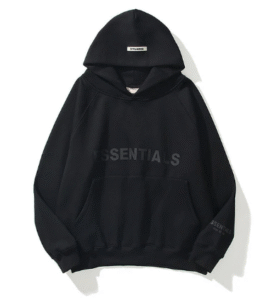Bringing home your newborn is one of life’s most beautiful moments. Along with the snuggles and lullabies comes the desire to provide the utmost comfort and security for your baby. One of the most trusted and time-tested ways to do this is through a baby swaddle. If you’re a first-time parent or just unsure about how to swaddle correctly, this beginner’s guide breaks down everything you need to know—from the why to the how and what to use.
What is a Baby Swaddle?
A baby swaddle is a soft piece of cloth or muslin wrap used to snugly wrap a baby to mimic the warmth and security of the womb. For centuries, parents have used swaddling to calm fussy babies, promote better sleep, and reduce startle reflexes that often wake infants up during naps or nighttime.
When done correctly, swaddling is not just safe—it’s comforting. But if you’re unsure how to start, don’t worry. You’re not alone.
Why Swaddling Works So Well
Let’s talk about why swaddling helps. In the first few months, babies undergo what’s known as the “fourth trimester.” They’re adapting to life outside the womb, which can be overwhelming. Swaddling recreates that womb-like environment. It makes them feel safe, held, and calm.
Here are some proven benefits of using a baby swaddle:
- Improved Sleep: Babies tend to sleep longer and more peacefully when swaddled.
- Reduced Moro Reflex: The startle reflex that causes a baby’s arms to suddenly jerk can disrupt sleep. Swaddling reduces this.
- Soothing and Calming: The snugness mimics a parent’s embrace, which lowers anxiety and fussiness.
- Lower Risk of SIDS: When babies are swaddled and placed on their backs, it reduces the chance of sudden infant death syndrome (SIDS).
When Should You Start Swaddling?
You can start swaddling your baby from day one, as long as they are healthy and full-term. Preemie babies can also be swaddled under medical guidance.
Swaddling is typically recommended for the first 8 weeks. However, once your baby starts showing signs of rolling over—usually around 2 to 3 months—it’s time to stop swaddling and transition to a sleep sack or wearable blanket. This change ensures your baby has freedom of movement and can reposition themselves safely in sleep.
Step-by-Step: How to Swaddle Your Baby Right
Mastering the art of swaddling is easier than it looks. Follow these steps:
- Lay the swaddle blanket flat in a diamond shape, folding the top corner down to form a triangle.
- Place your baby on the blanket with their shoulders just below the folded edge.
- Hold their right arm by their side and bring the left corner across the body. Tuck it snugly under their back.
- Fold the bottom corner up over the feet.
- Bring the right corner across the baby’s left side and tuck it securely.
Important tip: Make sure the swaddle is snug across the upper body but loose around the hips and legs. This allows healthy hip movement and reduces the risk of hip dysplasia.
Choosing the Right Baby Swaddle Fabric
Not all swaddles are made equal, and choosing the right fabric matters more than you think. Your newborn’s skin is sensitive, and breathability is key.
Here are common fabric choices:
- Cotton Muslin: Lightweight, breathable, and stretchable—ideal for warmer climates or layering in cooler months.
- Bamboo Viscose: Incredibly soft and temperature-regulating, perfect for sensitive skin.
- Organic Cotton: Free of harsh chemicals and pesticides, great for eco-conscious parents.
The swaddle you choose should be soft, safe, and allow air circulation. Look for pre-washed, chemical-free materials that are gentle on your baby’s skin.
Swaddle Safety Tips Every Parent Should Know
Even though swaddling is generally safe, doing it the wrong way can cause issues. Here’s what to keep in mind:
- Always place your baby on their back to sleep.
- Don’t swaddle too tightly. Tight swaddling around the chest can restrict breathing.
- Keep it loose around the hips to avoid hip dysplasia.
- Stop swaddling once your baby rolls over or begins to show signs of mobility.
These small precautions make a big difference in ensuring your baby’s safety and comfort.
Baby Swaddle Alternatives
Not every baby enjoys swaddling—and that’s okay. Some babies prefer more freedom or may simply resist being wrapped. In such cases, alternatives like sleep sacks or transition pods can be excellent options. These provide a similar sense of security without restricting arm or leg movement.
Some modern swaddles also come with Velcro or zip-up designs that make swaddling easier and more secure. These are especially helpful for parents who struggle with traditional swaddle folds.
Common Swaddling Questions—Answered
Q: Can I swaddle my baby all day?
Swaddling is best reserved for naps and nighttime. Allow your baby some free movement during the day to help with motor development.
Q: My baby hates being swaddled. What should I do?
Try swaddling with one arm out or consider a transitional swaddle product. Some babies need a bit more freedom.
Q: Is it okay to swaddle in hot weather?
Yes, but use a breathable, lightweight fabric like muslin or bamboo. Avoid overdressing your baby underneath.
Final Thoughts
Swaddling can be a real game-changer in the early months of parenthood. It soothes your baby, supports better sleep, and gives you a little more peace of mind. Like any parenting technique, the key is to do it correctly and adapt to your baby’s needs as they grow.
For beautifully designed, breathable, and skin-friendly options, Cocoon Care offers a range of baby swaddles that blend safety with style. Their thoughtfully crafted products make swaddling not just easy—but enjoyable.
So take a deep breath, wrap your baby with love, and trust your instincts. You’ve got this!
- Baby Swaddle Basics: A Beginner’s Guide to Wrapping Your Newborn Right
- Learn the essentials of baby swaddle techniques, benefits, and fabric choices to wrap your newborn right. Perfect guide for new parents seeking comfort and safety.
- Baby Swaddle
Related posts:
No related posts.



